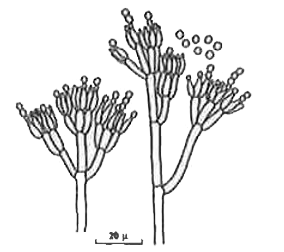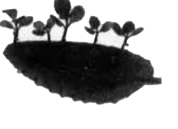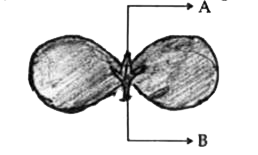Complete Solutions to ZEN ADDITIONAL QUESTIONS SECTION (MULTIPLE CHOICE QUESTIONS) of chapter HOW DO ORGANISMS REPRODUCE? of Class 10 book with complete answers and questions
| Class 10 | BIOLOGY |
| Chapter | HOW DO ORGANISMS REPRODUCE? |
| ZEN PUBLICATION | ZEN ADDITIONAL QUESTIONS SECTION (MULTIPLE CHOICE QUESTIONS) |
| Number Of Questions | 54 |
| Academic Year | 2023-24 |
One of these is not a life process A) Respiration B) Sensation C) Reproduction D) Excretion
02:08View SolutionOne of these does not belong to the group with respect to reproduction
02:27View SolutionSperms are produced in
01:10View SolutionFragmentation can be considered as
01:18View SolutionThe adjoining figure represents
 01:54View Solution
01:54View SolutionThe given figure represents
 02:25View Solution
02:25View SolutionThe tail of a lizard is cut. One of the following statements is true regarding it.
01:13View SolutionThe adjoining figure represents
 01:23View Solution
01:23View SolutionRaju decides to prepare spongy dosa. He adds a spoon of yeast cells to the dosa batter. The dosa batter rises after about an hour. This is because
01:19View SolutionOne of these does not belong to the group
01:15View SolutionVegetative reproduction takes place from the following
02:14View SolutionOne of these is not a part of stamen
01:43View SolutionThe part of the flower which develops into a fruit is
01:51View SolutionPart of the seed which develops into root is
01:18View SolutionThe part of the sperm which contains the nucleus is
01:51View SolutionWhich of the following is the correct sequence of events of sexual reproduction in a flower?
03:05View SolutionIn Rhizopus, tubular thread-like structures bearing sporangia at their tips are called
02:49View SolutionLength of pollen tube depends on the distance between
04:20View SolutionIn human males, the testes lie in the scrotum, because it helps in the
02:25View SolutionWhich among the following diseases is not sexually transmitted?
03:43View SolutionQuestion. The correct sequence of organs in the male reproductive system for transport of sperms is
02:45View SolutionFertilisation is the process of
02:10View SolutionA student, while observing an embryo of a pea seed in the laboratory, listed various parts of the embryo as given below: Testa, Tegmen, Radicle, Plumule, Micropyle, Cotyledon. On examining the list, the teacher remarked that only three parts are correct. Select the three correct parts from the list:
02:26View SolutionBinary fission is observed in which one of the following figures?
04:08View SolutionPart of the flower that develops into fruit and part of the seed that develops into root respectively are
04:23View SolutionThe group of organisms that reproduce through fission only is
04:03View SolutionIn the given figure of Cotyledon the parts labelled as A and B respectively are
 02:16View Solution
02:16View SolutionOne of these is not a life process
02:08View SolutionOne of these does not belong to the group with respect to reproduction
02:27View SolutionSperms are produced in
01:10View SolutionFragmentation can be considered as
01:18View SolutionThe adjoining figure represents
 01:54View Solution
01:54View SolutionThe given figure represents
 02:25View Solution
02:25View SolutionThe tail of a lizard is cut. One of the following statements is true regarding it.
01:13View SolutionThe adjoining figure represents
 01:23View Solution
01:23View SolutionRaju decides to prepare spongy dosa. He adds a spoon of yeast cells to the dosa batter. The dosa batter rises after about an hour. This is because
01:19View SolutionOne of these does not belong to the group
01:15View SolutionVegetative reproduction takes place from the following
02:14View SolutionOne of these is not a part of stamen
01:43View SolutionThe part of the flower which develops into a fruit is
01:51View SolutionPart of the seed which develops into root is
01:18View SolutionThe part of the sperm which contains the nucleus is
01:51View SolutionWhich of the following is the correct sequence of events of sexual reproduction in a flower?
03:05View SolutionIn Rhizopus, tubular thread-like structures bearing sporangia at their tips are called
02:49View SolutionLength of pollen tube depends on the distance between
04:20View SolutionIn human males, the testes lie in the scrotum, because it helps in the
02:25View SolutionWhich among the following diseases is not sexually transmitted?
03:43View SolutionQuestion. The correct sequence of organs in the male reproductive system for transport of sperms is
02:45View SolutionFertilisation is the process of
02:10View SolutionA student, while observing an embryo of a pea seed in the laboratory, listed various parts of the embryo as given below: Testa, Tegmen, Radicle, Plumule, Micropyle, Cotyledon. On examining the list, the teacher remarked that only three parts are correct. Select the three correct parts from the list:
02:26View SolutionBinary fission is observed in which one of the following figures?
04:08View SolutionPart of the flower that develops into fruit and part of the seed that develops into root respectively are
04:23View SolutionThe group of organisms that reproduce through fission only is
04:03View SolutionIn the given figure of Cotyledon the parts labelled as A and B respectively are
 02:16View Solution
02:16View Solution
ZEN ADDITIONAL QUESTIONS SECTION (MULTIPLE CHOICE QUESTIONS) questions and complete solutions for chapter HOW DO ORGANISMS REPRODUCE? of ZEN BIOLOGY (KANNADA ENGLISH) of Class 10
All Exercises from ZEN PUBLICATION Class 10 BIOLOGY HOW DO ORGANISMS REPRODUCE?
- QUESTIONS SECTION (IN TEXT QUESTIONS)
- QUESTIONS
- QUESTIONS SECTION (IN TEXT QUESTIONS)
- QUESTIONS SECTION (TEXTUAL EXERCISE)
- ZEN ADDITIONAL QUESTIONS SECTION (LONG ANSWER [LA] TYPE QUESTIONS)
- ZEN ADDITIONAL QUESTIONS SECTION (MULTIPLE CHOICE QUESTIONS)
- ZEN ADDITIONAL QUESTIONS SECTION (SHORT ANSWER [SA] TYPE 1 QUESTIONS)
- ZEN ADDITIONAL QUESTIONS SECTION (SHORT ANSWER [SA] TYPE 2 QUESTIONS)
- ZEN ADDITIONAL QUESTIONS SECTION (VERY SHORT ANSWER [VSA] TYPE QUESTIONS)
